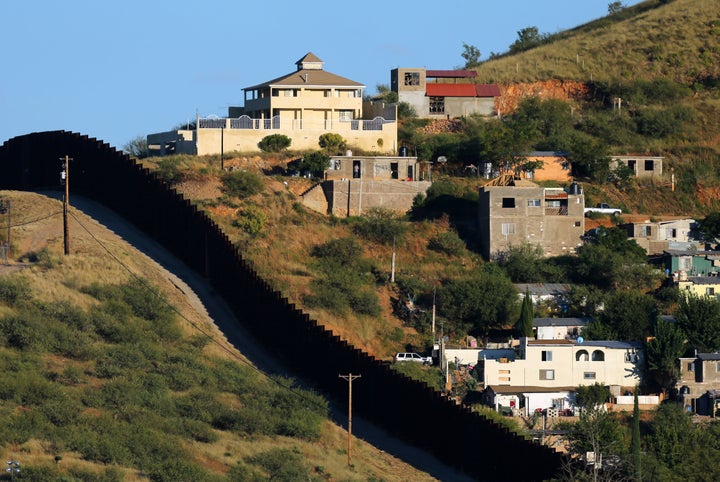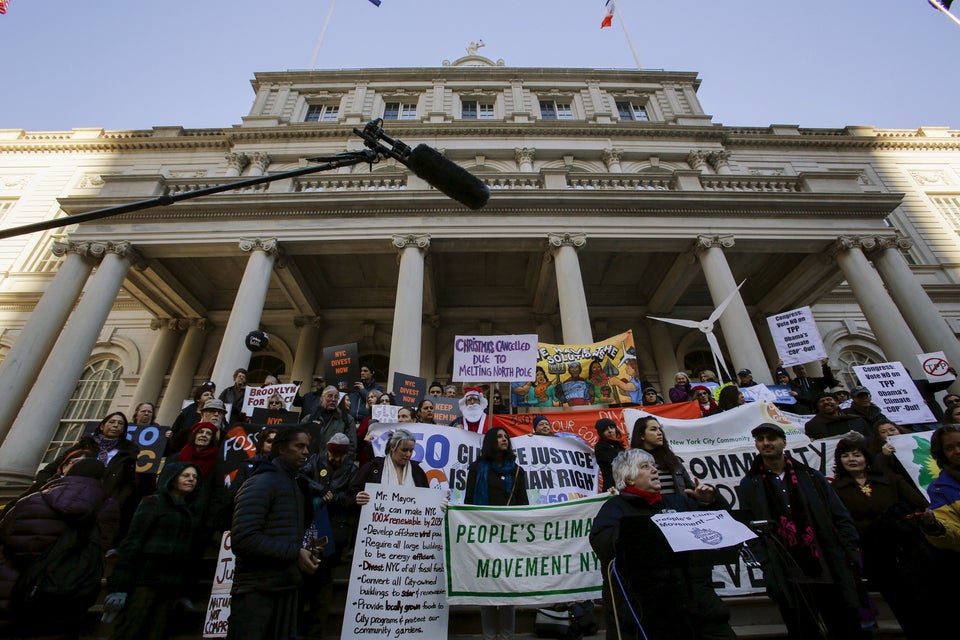
Much has been made of the monetary cost of President Donald Trump’s proposed border wall. Trump himself has cited wildly differing estimates. Senate Majority Leader Mitch McConnell (R-Ky.) recently said that the wall would cost $12 billion to $15 billion. Some experts have cited numbers far higher.
But the wall’s true cost surpasses even the biggest numbers being discussed. There’s upkeep, of course — hundreds of millions of dollars per year will be needed to maintain the 1,000-mile barrier. There are other expenses, too, some of them intangible and difficult to quantify.
The political blowback could be significant. Mexican President Enrique Peña Nieto has already canceled a meeting with Trump over the wall, calling it a sign of disrespect. (Mexico is America’s third-largest trading partner and a close ally.) And the impacts on native tribes, border communities and migrant populations are projected to be immense.
Then, there’s the potential damage to the environment, both locally and beyond. Environmentalists say the wall will contribute to climate change, disrupt natural water flows and profoundly affect native species and habitats.
“Let me be blunt — there are no benefits of a border wall, and many risks,” Dan Millis, a coordinator of the Sierra Club’s borderlands program, told HuffPost in an email this month.
“We don’t just have concerns about the border wall, we have impacts,” Millis said. “That’s because there are already walls and barriers along more than 650 miles of the U.S.-Mexico border.” Existing fences have not served their intended purpose, he said, but have “already cost taxpayers billions of dollars, and have resulted in a wide array of unintended and damaging consequences.”
Research suggests the existing barriers have not been effective at restricting the movement of people. A report released this week by the Government Accountability Office found that border fencing was breached more than 9,200 times from 2010 to 2015. The barriers, however, have proven to be a formidable foe to migrating animals.
A 2014 study found that security barriers on the Arizona-Mexico border were doing little to prevent crossings by humans, but were restricting the movements of native species like pumas and coatis, a raccoon-like creature, thus limiting their access to food, water and habitat.
“There was no significant difference in the number of migrants present in areas where there was a wall, compared to areas where there was no wall,” Jamie McCallum, the lead author of the study, told HuffPost in interview last year. “In other words, the wall did not seem to be doing the job it was intended for.”
The barriers, however, could be driving some native species to “a possible collapse in population,” the study said.


Migration corridors are critical for the health and survival of wildlife along the border. Endangered animals like jaguars and ocelots only live in the U.S. because of movements out of Mexico. Other species, including bighorn sheep, pygmy owls, gray wolves and black bears, travel back and forth across the border to access vital resources and to maintain genetic diversity.
Clinton Epps, a wildlife biologist at Oregon State University, told the BBC last year that some species have been crossing the border for millions of years. A physical barrier, he said, could “fundamentally alter” the health and behavior of these populations.
A wall also will stifle the ability of species to adapt to a changing climate. Imagine, for instance, if a herd of deer or an endangered species like the jaguar needed to move north or to a higher elevation in order to adapt to higher temperatures and lower rainfall. If “a wall impedes their movement, that particular herd ― or even an entire species ― is put at risk,” said Millis.


Beyond the disruption to migratory movements, border infrastructure could also fragment and destroy habitats. Sergio Avila-Villegas, a conservation research scientist from Tucson’s Arizona Sonora Desert Museum, told the BBC that a wall would have “effects for the ecosystem as a whole”.
The U.S. Fish and Wildlife Service has estimated that 111 endangered species and 108 migratory bird species would be affected by an unbroken barrier along the entire land border between the U.S. and Mexico, reported Outside magazine. The bald eagle, California condor, several sea turtles and the West Indian manatee are among the species that would be potentially threatened by the wall.

Natural water flows across the Mexican border also would be affected. Existing barriers have already led to problems like erosion, flooding and sedimentation in border communities. In Arizona, for example, border fences have been the cause of increased flooding.
The border wall could additionally be a significant contributor of global warming. “The production of the concrete for a wall such as the one Trump has suggested would produce a lot of greenhouse gases, since cement production is a coal-fired, carbon-intensive process,” said Millis.
According to the MIT Technology Review, Trump’s wall would contain some 9.7 million cubic meters of concrete and 2.3 billion kilograms of steel — the production of which would produce more than 7.8 million metric tons of carbon dioxide emissions.
“For some context, that’s the same as the emissions from 823,654 homes over the course of a year,” wrote the magazine. “And that’s on the low end: ongoing maintenance, re-routing of traffic, and other unforeseen consequences could all push the figure far higher.”

Environmentalists say they are particularly concerned that Trump, thanks to a legal loophole, may be able to push through his plans for the wall with little or no environmental oversight.
In 2005, during George W. Bush’s presidency, Congress passed a bill that allows the secretary of Department of Homeland Security to waive local, state and federal laws deemed to hinder the building of walls and roads along U.S. borders. The Sierra Club said on its website that the law has already been used “multiple times” by DHS to “waive in their entirety” 37 federal laws, including the Endangered Species Act, the Clean Water Act, National Historic Preservation Act and the National Forest Management Act.
In 2008, then-Homeland Security Secretary Michael Chertoff invoked the waiver to bypass environmental laws to build fences along more than 450 miles of the southern border. “With the stroke of a pen one individual has the ability to dismiss decades of protective laws passed by Congress and signed by presidents, all to circumvent local, state, and federal laws when constructing border walls,” the Sierra Club said.
Melinda Taylor, an environmental law professor at the University of Texas, said Trump could exploit this loophole to devastating effect.
“The new administration has a wild card they can pull and it’s in this law,” Taylor told CNN last month. “The language in this law allows them to waive all federal laws that would be an impediment to building any type of physical barrier along the border, including a wall.”
If Trump does use this “wild card” to duck environmental protections, “it will be particularly tragic,” said Taylor. “If they really try to build a wall, without regard for environmental laws and without environmental impact statements, the effect of a border wall would be more catastrophic than a border fence.”
______
Dominique Mosbergen is a reporter at The Huffington Post covering climate change, extreme weather and extinction. Send tips or feedback to dominique.mosbergen@huffingtonpost.com or follow her on Twitter.

